Learn To Lipo Cavitation Like A Professional – Work Cause Cancer Side Effects
A sculpted figure takes more than just losing weight; it also demands toning and sculpting of particular body parts. Many people find that stubborn fat deposits resist the benefits of a good diet and exercise, resulting in an imbalance in body proportions. Traditional liposuction can provide a solution; however, potential patients may be put off by concerns about downtime, incisions, and recuperation.

Lipo Cavitation, a non-invasive method of liposuction, can help in this situation. It facilitates in the removal of stubborn fat, body sculpting, and skin tightening without any noticeable side effects or recovery time. This article will provide you a complete overview of lipo cavitation, including its technique, benefits, adverse effects, and more.
What is Lipo Cavitation?
Using ultrasound technology to break down fat cells beneath the skin is known as ultrasonic or ultrasound cavitation. It is a non-surgical treatment for cellulite and localised fat. Ultrasonic vibrations are used to apply pressure to fat cells during this technique. The pressure is strong enough to cause fat cells to dissolve into liquid. The body can then eliminate it as waste through urine.
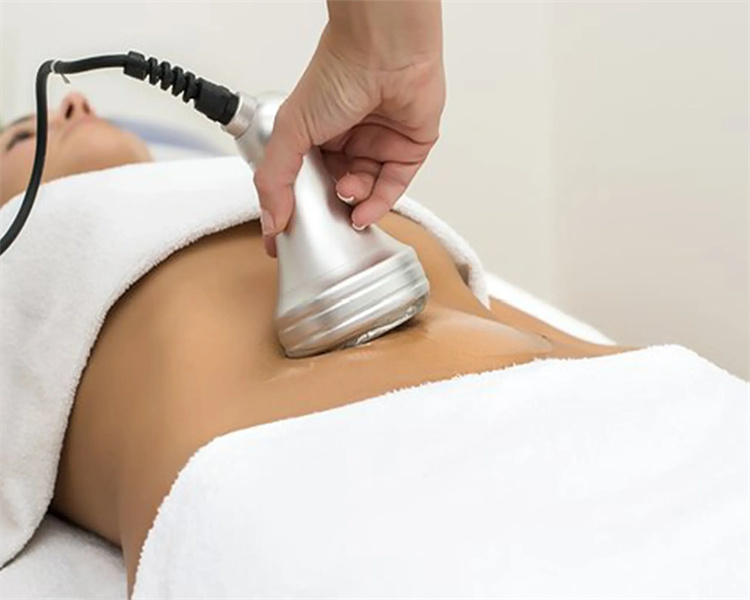
The broken-down fat cells are expelled as waste from the body by the liver. This treatment strategy is utilized in conjunction with other weight loss programs to aid in the removal of excess fat. It is a preferred method of removing body fat over other invasive procedures. It is vital to realize that if you would eat a high-calorie diet in future, your weight may return.
How does ultrasonic cavitation work?
Ultrasonic cavitation uses radio frequencies and low-frequency ultrasonic waves to tone the body. These waves cause bubbles to develop around fat deposits beneath the skin. The bubbles then burst, evacuating the fat deposits into the interstitial and lymphatic systems. Glycerol and free fatty acids are formed from the fat deposits. The organism then recycles Glycerol, whilst free fatty acids are transported to the liver and expelled as waste.
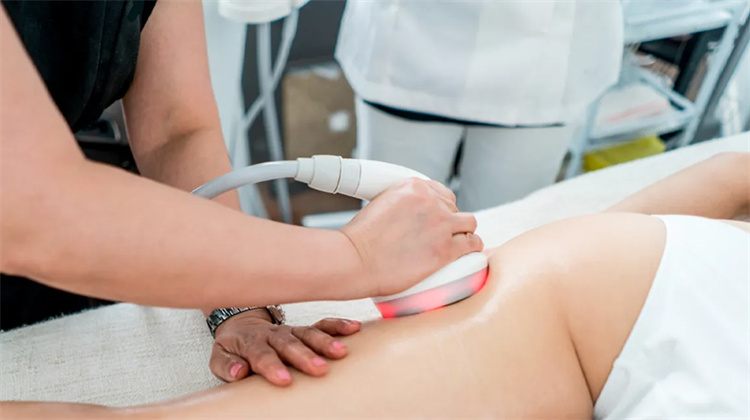
Is Lipo Cavitation Safe?
Yes, lipo cavitation is a safe, non-invasive therapy that has been thoroughly researched and utilized in Europe for decades. However, remember that any cosmetic treatment has both dangers and advantages. Make sure you hire a reliable and skilled specialist for the treatment.
Ultrasonic cavitation decreases fat deposits in the body that are difficult to eliminate by exercise alone. However, this method cannot be utilized to cure obesity alone. Ultrasonic cavitation is the most effective method for decreasing cellulite and adipose fat.

This improves body form and contour while also decreasing circumference. Following the cavitation operation, it is critical to maintain a low-calorie balanced diet and to engage in physical activity. This will aid in weight control and treating problems such as prediabetes in obese women.
Individuals with stable Body Mass Index levels (18.5k / m2 and 24.9kg / m2) and women with abdominal obesity are candidates for ultrasonic cavitation therapy. The following people should not have the procedure:
- Women who are pregnant or breastfeeding
- Persons with skinfolds less than 2 cm Infection or inflammation in the area where the treatment will be performed
- People who have a history of cancer
- Individuals who have a cardiac pacemaker or other metal implants
- Individuals suffering from coagulation issues or receiving blood clotting medications
- Individuals suffering from significant medical diseases such as diabetes and osteoporosis
Ultrasonic cavitation is a procedure that the FDA has approved. There is no downtime required because the technique is non-invasive. Fat cells that have been killed do not regenerate.
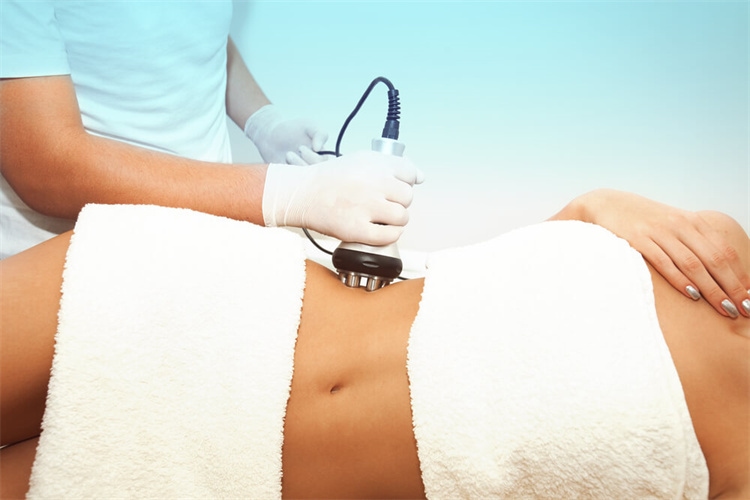
The effects of ultrasonic cavitation might remain for a long time if weight maintenance actions are followed. Ultrasonic cavitation should not be utilized in place of physical activity. Regular physical activity is more helpful in lowering body weight and the chance of acquiring cardiovascular medical problems.
Pros and cons of ultrasonic cavitation
There are pros and cons to use non-invasive treatments to reduce body fat.
- There is minimal to no downtime required.
- A healthy lifestyle produces long-term results.
- Results appear gradually, allowing you to preserve treatment discretion.
- Causes little side effects
- There are no scars.
- There is no need for anesthesia.
- Weight loss is less when compared to invasive treatments such as liposuction.
- It is impossible to determine the precise amount of fat eliminated.
- It may be ineffective for people who need to drop a lot of weight.
- For desired outcomes, other weight loss treatments may need to be supplemented.
Following ultrasonic cavitation, you must continue to eat a healthy, balanced diet and drink enough of water. Consider a low-calorie diet that includes less carbohydrates and foods with a low glycemic index for example, fruits and vegetables.
Can ultrasonic cavitation cause cancer?
According to expert Daniel P. Markmann, MD, Since ultrasonic liposuction has been used for more than 20 years, there is no proof that ultrasonic cavitation devices cause cancer.
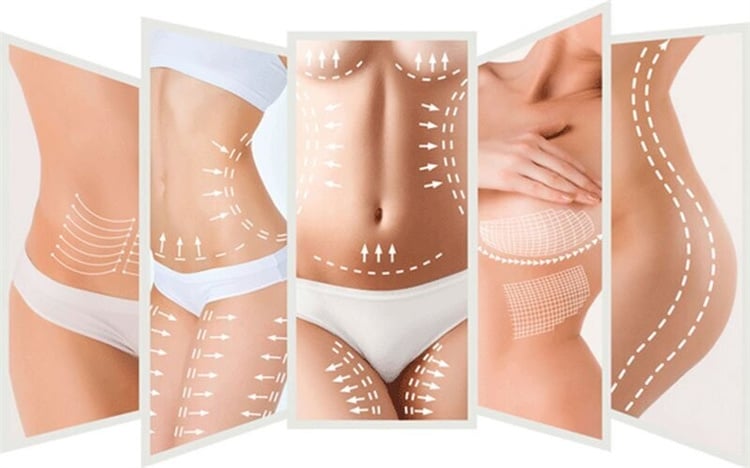
However, there may be significant limitations to using ultrasonic cavitation in patients with cancer or a history of cancer. Individuals undergoing chemotherapy or radiation therapy, for example, may be more vulnerable to the harmful effects of ultrasonic cavitation. Furthermore, persons with certain diseases, such as breast cancer, may have metal implants or other devices that the surgery could damage.
Are the results of ultrasonic cavitation permanent?
Lipo cavitation does not block the formation of new fat cells. The best way to ensure long-term outcomes is to live a healthy lifestyle. Those who follow a healthy diet and exercise plan will enjoy long-term benefits.
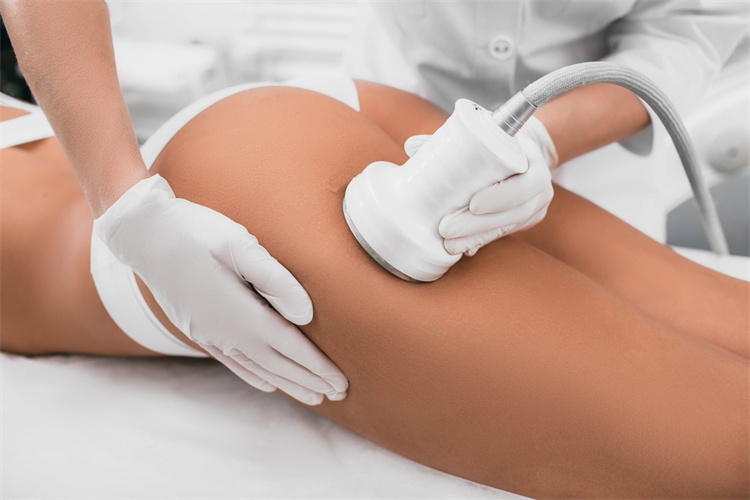
Does ultrasonic cavitation have any side effects?
While lipo cavitation is a non-invasive and generally safe therapy, it is not without risk. However, most people experience minor and transient side effects. Mild bruising in the treatment area, transitory skin sensitivity, or moderate discomfort during the process are all possible.
During the ultrasound procedure, you may also feel warm or hear a faint ringing in your ears. These adverse effects usually go away soon after therapy.

Ultrasonic cavitation is a safe FDA-approved therapy, but, like with any cosmetic operation, there are potential dangers and adverse effects to consider.
The following are some examples of common performance, particularly when the method is performed poorly or by a physician who lacks experience.
- Bruising or Redness
Bruising or redness of the skin may be visible within the first few hours after ultrasonic cavitation treatment.
- Discomfort
Some patients may experience pain or discomfort depending on where the sound waves are focused on the body during the surgery.
- Skin Sensitivity
Skin sensitivity may occur due to the cavitation gel used before treatment and the ultrasound technique utilized to penetrate the skin layer. Itching and swelling may occur, but these symptoms are transitory and will disappear in a few days.
- Headaches
It is common to experience lightheadedness, which is produced by the body’s release of toxins. Staying hydrated and exercising after therapy may speed the process of cleansing the system.
The hazards and negative effects of ultrasonic cavitation vary based on the individual and the surgery. It is best to see a healthcare professional before commencing any new treatment.
How much does ultrasonic cavitation cost?
The cost of ultrasonic cavitation varies widely depending on the treatment area, however, you should budget between $250 and $350 per session.
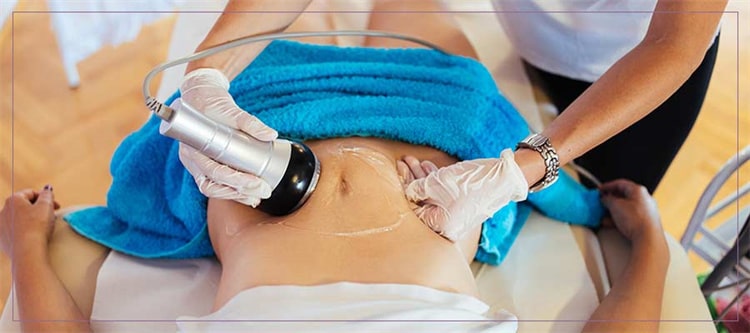
What happens during an ultrasonic cavitation session?
To understand lipo cavitation, you must first learn about the technique.
- Consultation: The first phase in the Lipo Cavitation procedure is a consultation in which the practitioner assesses the patient’s suitability for the therapy, sets a treatment plan, and discusses the patient’s goals.
- Ultrasound Device Application: A specialized ultrasound device is applied to the treatment location.
- Ultrasonic Wave Emission: The device produces ultrasonic waves at a low frequency. These waves create rapid variations in pressure.
- Cavitation Bubble Formation: These pressure fluctuations cause cavitation bubbles to form around the fat cells in the treated area.
- Bursting of Bubbles: When these bubbles burst, they tear apart fat cells, called adipocytes.
- The pressure causes the membranes of the fat cells to disintegrate, and this process transforms the fat into a liquid state by breaking down bigger fatty acids into simpler fatty substances and glycerol.
- Fat Elimination via the Lymphatic System: The liquefied fat, now triglycerides, is naturally drained out of the body via the lymphatic system.
- Procedure Duration and Experience: Despite its high-tech nature, the Lipo Cavitation technique is painless and takes between twenty and sixty minutes to complete, depending on the size of the treated region. Patients frequently experience a slight warming sensation throughout the operation.
Targeted areas for ultrasonic cavitation
Individuals who maintain a balanced diet and frequent exercise but still battle with localized regions of stubborn fat – often in the abdomen, flanks, also known as love handles, thighs, buttocks, or upper arms – are candidates for this treatment. Because this operation targets pockets of fat, it is not a cure for obesity or a replacement for appropriate diet and exercise. Patients seeking skin tightening as well as fat loss may benefit from this procedure as well.

Preparing for ultrasonic cavitation
Optimizing lipo cavitation results necessitates various pre- and post-treatment procedures. You should follow a low-calorie, low-carbohydrate, and low-fat diet for 24 hours before your session.
Drinking plenty of water both before and after the treatment is essential because it helps your body flush out the fatty acids. Avoid big meals, alcohol, and caffeine after treatment, as these can all slow down the body’s natural fat disposal mechanism.
After each session, regular physical activity, particularly cardio, is suggested to assist the body in metabolizing and removing fatty compounds more efficiently. Following this schedule allows you to achieve visible and best effects sooner.
What to expect after ultrasonic cavitation
Your body may feel bloated or swollen immediately following therapy. It takes time for your body to break down and remove the displaced fat cells. Repeated treatments may also be required to observe visible benefits. Most patients who receive this treatment see their ultimate results within 6 to 12 weeks.
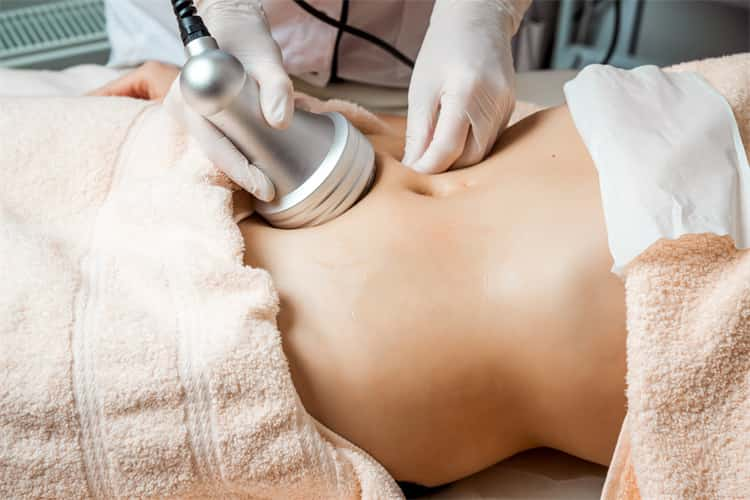
Ultrasonic cavitation vs. CoolSculpting
The procedure used in CoolSculpting and Ultrasonic Cavitation differs greatly. CoolSculpting use the cryolipolysis process to freeze, destroy, and remove fat. The Ultrasonic Cavitation technique, on the other hand, uses ultrasonic waves to destroy fat cells.
Summary
Lipo cavitation can be an excellent approach to removing extra fat, tightening skin, and improving body shapes without invasive surgery or extended recovery times. This non-invasive therapy is an enticing option because of its ease, quick results, and overall affordability.
Ultrasonic cavitation, a popular body-shaping technique, produces outstanding results. Understanding the potential hazards and cautions connected with ultrasonic cavitation is critical. You can assess whether ultrasonic cavitation is right for you by speaking with a healthcare professional to learn the limitations of the treatment.






